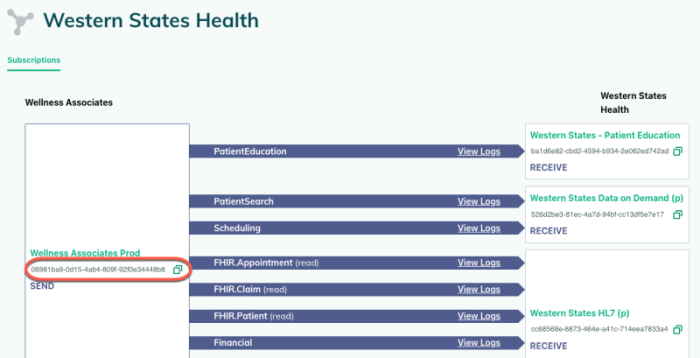While data exchange often focuses on the destination, the source is critical for kicking off the exchange and routing data to the right location.
With Redox, you typically only need one source to send data from, unless data is exchanged in multiple formats that require different configurations. A source, the initiating point of a request, is identified in either the header or payload with source IDs.
For outgoing requests, you’re responsible for providing your source details for routing purposes.
If you only have one source, it’s entirely optional to include the source ID in an outgoing request. With one source, the source ID only matters if the destination system needs it for their own processing.
If your system has multiple sources (e.g., your system sends data via API and SFTP), you must identify the relevant source ID in any outgoing requests. That way, Redox knows where the request came from, what configuration to apply, and who to notify in case of errors.
You can locate the source ID either in the Redox dashboard or via the Platform API.
Use the Get sources endpoint to retrieve a list of sources with their corresponding IDs.
Log into the Redox dashboard and navigate to the Developer page to locate the source ID. By default, the Sources tab opens with any configured sources and API keys. Find the source you want to use and copy its ID value.

Alternatively, navigate to the Connections page to locate the source ID. By default, the Subscriptions tab opens. All of your sources display on the left side of the subscription. Find the source you want to use and copy its ID value.

Identify the source in the Meta.Source.ID field of the request payload. Remember that this field is only required if you have more than one source in your environment.
Identify the source by adding the Redox-Source-Id header to an outgoing query. This header is only required if you have more than one source in your environment.
For FHIR® writeback messages, include a MessageHeader resource with this metadata:
Metadata | Required | Notes |
|---|---|---|
MessageHeader.source.endpoint | Required | Set to your Redox source ID (urn:uuid:<source-id>) or a public endpoint that identifies your organization. For example, we’d use https://redoxengine.com to identify Redox. This is required even if Redox-Source-Id isn’t. |
source.name | Optional, but recommended | Enter a human-readable name for the source represented by the URL. |